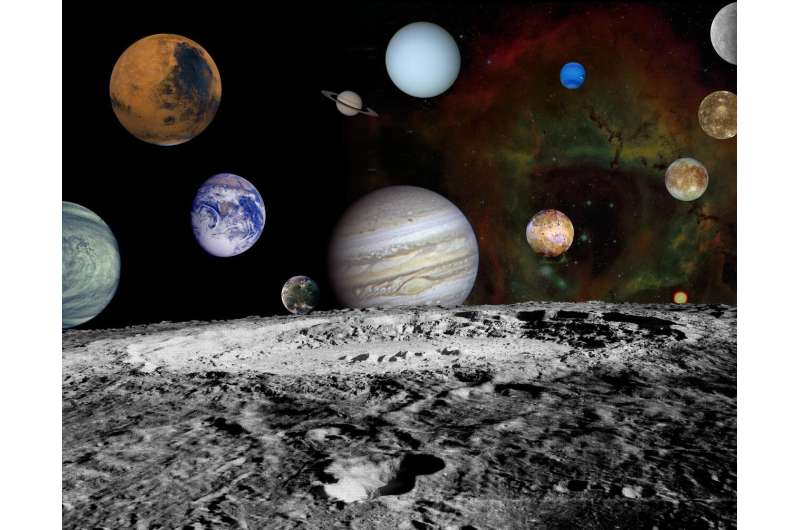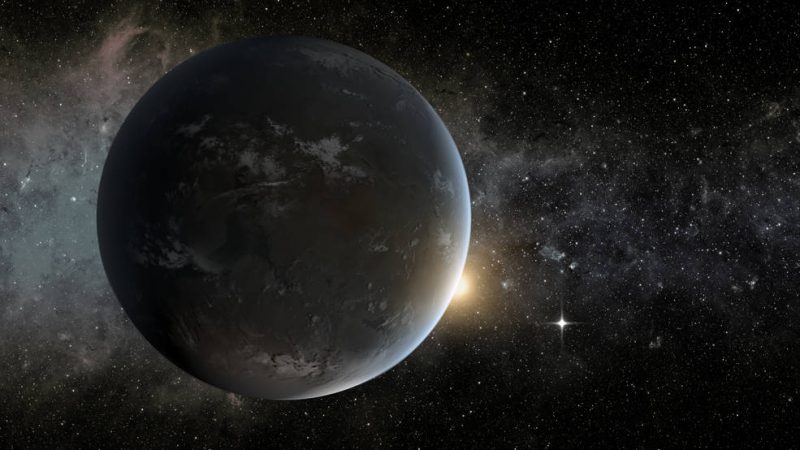
If a terrestrial planet had formed between Mars and Jupiter, where the asteroid belt now reigns, it could have meant the end of life on Earth. Researchers at the University of California-Riverside announced on March 7, 2023, that if a rocky, Earth-like world took up residence in the asteroid belt, it would push Earth out of the solar system and wipe out life on our planet. Thank goodness it was just an experiment.
Astrophysicist Stephen Kane, who ran the experiment, published his peer-reviewed study in The Planetary Science Journal on February 28, 2023.
A theoretical planet that could end life on Earth
Kane ran the experiment as an attempt to study two gaps in planetary science.
The first gap is the one that exists between terrestrial planets and gas giant planets. Earth is the largest terrestrial planet, and Neptune is the smallest gas giant planet. Yet Neptune is four times wider and 17 times more massive than Earth. But in the 5,000-plus exoplanets we’ve discovered in solar systems around other stars, we’ve discovered plenty of planets that bridge that gap. As Kane said:
In other star systems there are many planets with masses in that gap. We call them super-Earths.
The second gap is the one that lies between Mars and Jupiter in the solar system. Sure, the asteroid belt is there, but if all the mass in the asteroid belt came together to form one body, it would be a dwarf planet barely half the size of Pluto. As Kane said:
Planetary scientists often wish there was something in between those two planets [Mars and Jupiter]. It seems like wasted real estate.
Simulating a non-existent planet
For his study, Kane ran computer simulations, putting a planet of various masses into the area of the asteroid belt. Then he watched what happened. The results were disastrous.
The reason is because of giant Jupiter. Jupiter is so large that it’s more than twice as massive as all other planets in the solar system combined. With such a massive planet sitting among the planets, it has an out-sized gravitational influence as well. So, if a theoretical terrestrial planet were to exist in the range of the asteroid belt, it would disturb Jupiter’s orbit, and thereby all the other planets’ orbits, too.
As the press release said:
Depending on the mass and exact location of a super-Earth, its presence could ultimately eject Mercury and Venus as well as Earth from the solar system. It could also destabilize the orbits of Uranus and Neptune, tossing them into outer space as well.
The super-Earth would change the shape of this Earth’s orbit, making it far less habitable than it is today, if not ending life entirely.
Only when Kane shrunk the imaginary planet down and put it directly between Mars and Jupiter did it achieve a stable orbit in his simulations. However, small nudges one way or another would again throw off our solar system as we know it. Kane said:
This fictional planet gives a nudge to Jupiter that is just enough to destabilize everything else. Despite many astronomers having wished for this extra planet, it’s a good thing we don’t have it.
Life in solar systems
Kane’s experiment may also shed light on the ability of life to flourish (or not) on planets in other solar systems. However, Jupiter-sized planets in other systems tend to be much closer to their stars. In only 10% of solar systems have we found gas giants far from their stars, like our own Jupiter and sun. A gas giant planet near neighboring Earth-like planets or super-Earths could decide the fate of their orbits, and therefore, any life on such a planet.
The experiment made Kane reflective on our own solar system’s framework. Kane said:
Our solar system is more finely tuned than I appreciated before. It all works like intricate clock gears. Throw more gears into the mix and it all breaks.

Bottom line: Is there a planet that could end life on Earth? Fortunately, no. But an experiment from the University of California-Riverside showed that if a terrestrial planet existed between Mars and Jupiter, it would be bad news for us.
Source: The Dynamical Consequences of a Super-Earth in the Solar System
The post A planet that could end life on Earth? Don’t worry, it’s just an experiment first appeared on EarthSky.
from EarthSky https://ift.tt/Dfvu0eB

If a terrestrial planet had formed between Mars and Jupiter, where the asteroid belt now reigns, it could have meant the end of life on Earth. Researchers at the University of California-Riverside announced on March 7, 2023, that if a rocky, Earth-like world took up residence in the asteroid belt, it would push Earth out of the solar system and wipe out life on our planet. Thank goodness it was just an experiment.
Astrophysicist Stephen Kane, who ran the experiment, published his peer-reviewed study in The Planetary Science Journal on February 28, 2023.
A theoretical planet that could end life on Earth
Kane ran the experiment as an attempt to study two gaps in planetary science.
The first gap is the one that exists between terrestrial planets and gas giant planets. Earth is the largest terrestrial planet, and Neptune is the smallest gas giant planet. Yet Neptune is four times wider and 17 times more massive than Earth. But in the 5,000-plus exoplanets we’ve discovered in solar systems around other stars, we’ve discovered plenty of planets that bridge that gap. As Kane said:
In other star systems there are many planets with masses in that gap. We call them super-Earths.
The second gap is the one that lies between Mars and Jupiter in the solar system. Sure, the asteroid belt is there, but if all the mass in the asteroid belt came together to form one body, it would be a dwarf planet barely half the size of Pluto. As Kane said:
Planetary scientists often wish there was something in between those two planets [Mars and Jupiter]. It seems like wasted real estate.
Simulating a non-existent planet
For his study, Kane ran computer simulations, putting a planet of various masses into the area of the asteroid belt. Then he watched what happened. The results were disastrous.
The reason is because of giant Jupiter. Jupiter is so large that it’s more than twice as massive as all other planets in the solar system combined. With such a massive planet sitting among the planets, it has an out-sized gravitational influence as well. So, if a theoretical terrestrial planet were to exist in the range of the asteroid belt, it would disturb Jupiter’s orbit, and thereby all the other planets’ orbits, too.
As the press release said:
Depending on the mass and exact location of a super-Earth, its presence could ultimately eject Mercury and Venus as well as Earth from the solar system. It could also destabilize the orbits of Uranus and Neptune, tossing them into outer space as well.
The super-Earth would change the shape of this Earth’s orbit, making it far less habitable than it is today, if not ending life entirely.
Only when Kane shrunk the imaginary planet down and put it directly between Mars and Jupiter did it achieve a stable orbit in his simulations. However, small nudges one way or another would again throw off our solar system as we know it. Kane said:
This fictional planet gives a nudge to Jupiter that is just enough to destabilize everything else. Despite many astronomers having wished for this extra planet, it’s a good thing we don’t have it.
Life in solar systems
Kane’s experiment may also shed light on the ability of life to flourish (or not) on planets in other solar systems. However, Jupiter-sized planets in other systems tend to be much closer to their stars. In only 10% of solar systems have we found gas giants far from their stars, like our own Jupiter and sun. A gas giant planet near neighboring Earth-like planets or super-Earths could decide the fate of their orbits, and therefore, any life on such a planet.
The experiment made Kane reflective on our own solar system’s framework. Kane said:
Our solar system is more finely tuned than I appreciated before. It all works like intricate clock gears. Throw more gears into the mix and it all breaks.

Bottom line: Is there a planet that could end life on Earth? Fortunately, no. But an experiment from the University of California-Riverside showed that if a terrestrial planet existed between Mars and Jupiter, it would be bad news for us.
Source: The Dynamical Consequences of a Super-Earth in the Solar System
The post A planet that could end life on Earth? Don’t worry, it’s just an experiment first appeared on EarthSky.
from EarthSky https://ift.tt/Dfvu0eB

Aucun commentaire:
Enregistrer un commentaire